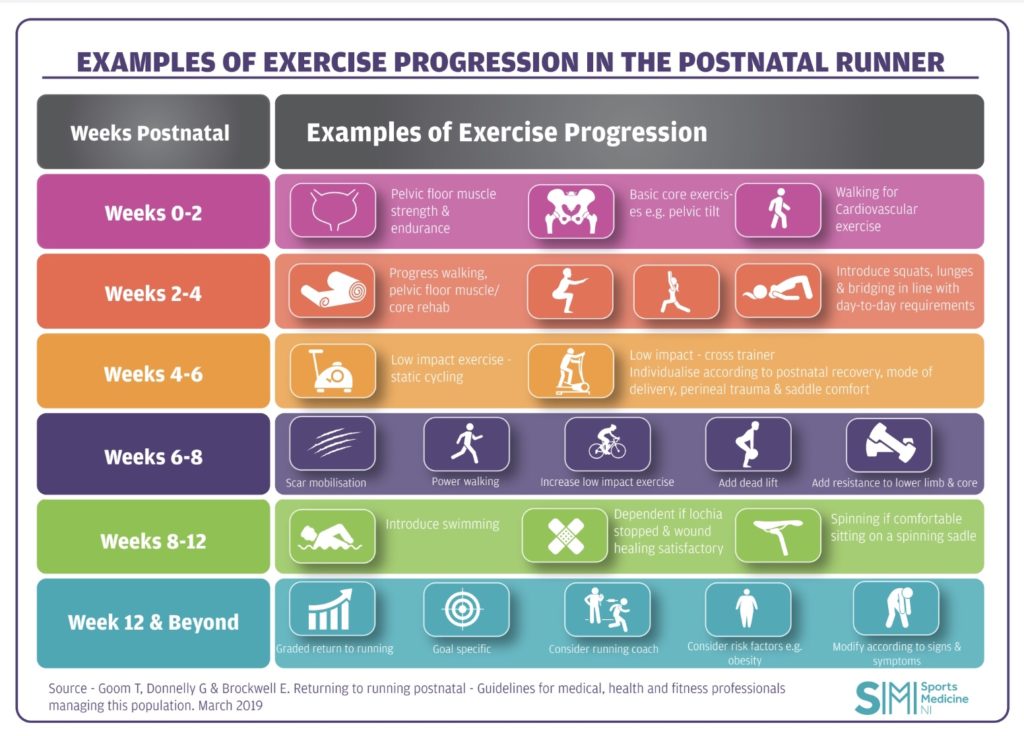Currently, there are no national/international guidelines that standardise practice and offer a framework for healthcare professionals to work with women who wish to return to running postpartum. For many women, factors such as low back/pelvic pain, urinary incontinence, and pelvic organ prolapse limit their success with returning to meaningful activity and there is little structured support provided from their medical team.
In 2019, Goom, Donnelly, and Brockwell released the first guidelines of its kind to help women and healthcare professionals support this population and created a starting point for further research in this area. Below are the some of the take home points.

A Summary of the Evidence-Based Recommendations:
- Postnatal women can benefit from individualised assessment and guided pelvic floor rehabilitation for the prevention and management of pelvic organ prolapse, the management of urinary incontinence and for improved sexual function. This individualised assessment can be completed in clinic and involves a detailed subjective history, orthopedic exam, and internal exam to best assess your goals and the health of your tissues. It will help to provide a better picture of the function and strength of the muscles of the pelvic floor that are important to support you during high impact activities.
- Return to running is not advisable prior to 3 months postnatal or beyond this if any symptoms of pelvic floor dysfunction are identified prior to, or after attempting, return to running. These symptoms may include, but are not limited to, heaviness in the pelvic area, leaking urine or inability to control bowel movements, bulging of the abdominal wall, and pelvic or lower back pain.
- Assess pelvic health, load impact management and strength testing in order to evaluate readiness to return to running postnatal. Some examples of the skills that may be considered to evaluate readiness to run include walking 30 minutes, single leg balance, single leg squat, jogging on the spot, hopping in place, and forward bounding. None of these movements should create any of the above listed pelvic symptoms to be considered successfully tolerated.
- Consider additional factors in a woman’s postnatal evaluation such as weight, fitness, breathing, psychological status, abdominal separation, breast support and feeding, RED-S and running with a buggy. You are more than just your physical capacity! We want to look at the whole picture when making the best choices for your health. This may include things such as screening for post-natal depression, considering milk supply, ensuring a good fitting sports bra, and reviewing your sleep and energy needs. Everyone is in a unique situation and learning more about you helps us to make a plan targeted to your specific needs.
As you can see, there are many things to consider when returning to running postpartum. By following a stepwise progression and gradually loading the pelvic floor as appropriate, pelvic physiotherapists can help to successfully help you to achieve this goal. For further information, schedule a postpartum assessment with REP Physio’s Women’s Health team to get started on the right path for you!
Goom T, Donnelly G, and Brockwell E. Returning to running postnatal- Guidelines for medical, health and fitness professionals managing this population. March 2019.
